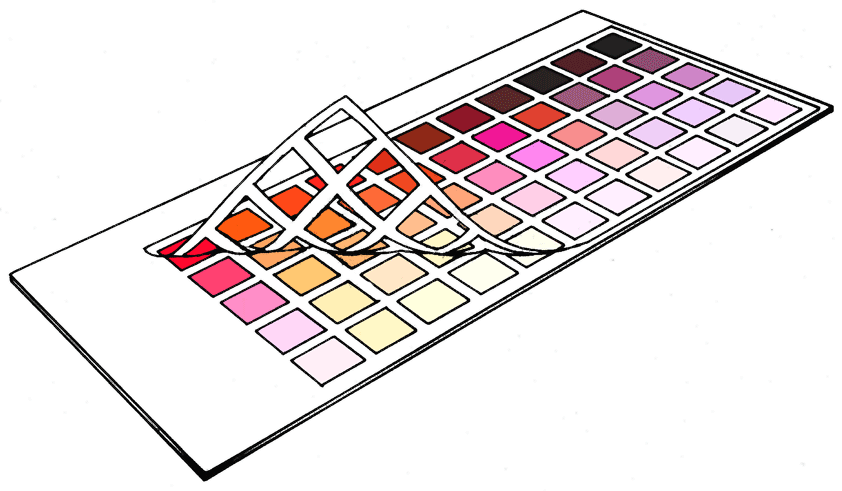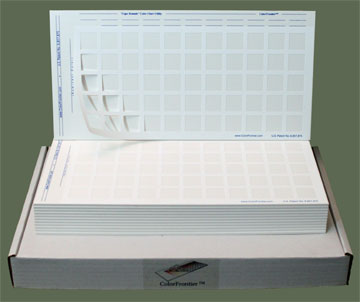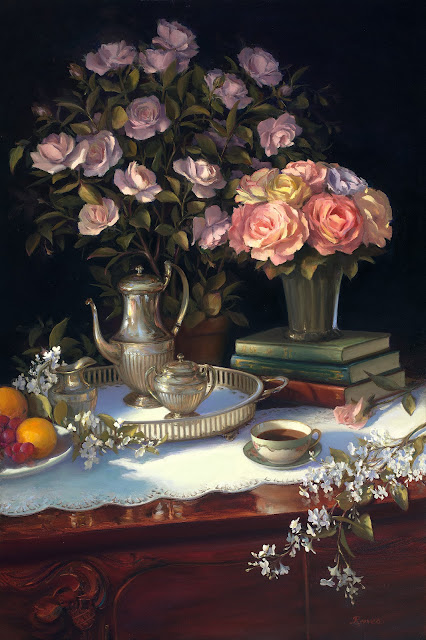In the previous two posts, I described a process I have found helpful for painting roses.
First, I emphasized the importance of getting the size and silhouette correct as you find the correct values with which to fill in the different areas of your rose. (It's interesting how the silhouettes of roses are always so different from one another, yet we always recognize a rose silhouette when we see it!)
Next, I stressed the need to stay aware of temperature and color saturation.
In this post, I am focused on the need to avoid using lines or dabs of color, but rather to build the form of the object with your strokes, paying close attention to both saturation and temperature. Try to notice the direction and other qualities of the strokes you see.
Remember - you can click on any image to ENLARGE it.
1. Starting with a much warmer block in - since the bright light (from the above right) that is hitting the rose is warm in temperature.
2. Carefully adding rich darker values to the block in.
3. Adding cooler petals that are reflecting the blue light coming from the window to the left.
4. Adding very rich, golden light shining through the petals.
5. Cutting in with the green of the background to create a more accurate silhouette (see petal on the far left/top). Adjusting the values to be more consistent with the rose I see before me.
6. Adding the very high value edges of petals that are being hit directly by the light above.
7. Backing up, now and then, to be sure the values and colors/temperature/intensity are reading correctly in relationship to the rest of the painting.
8. This is also when the shadows cast by the center petals onto the outer petals were finalized.
8. The completed rose!
I hope this series of three "mini lessons" was able to give you some insights for painting roses.












































